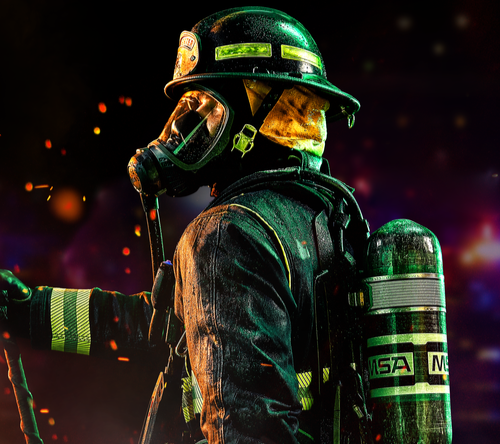By Denise Smith, PhD, FACSM; Professor, Skidmore College; Principal Investigator, SMARTER Project

Most of us are aware that technology is becoming increasingly prevalent. Almost every firefighter has a smart phone with impressive computing powers and the ability to provide extensive amounts of data upon demand. But, how does advancing technology affect the fire service? More importantly, how could technology make the fire service safer?
SMARTER Project
 A new research project, called SMARTER, is focused on advancing technology to improve health and safety in the fire service. The SMARTER project (Science, Medicine, Research, Technology for Emergency Responders) aims to employ scientific advances, medical knowledge, research findings, and technological solutions to reduce firefighter injuries and fatalities.
A new research project, called SMARTER, is focused on advancing technology to improve health and safety in the fire service. The SMARTER project (Science, Medicine, Research, Technology for Emergency Responders) aims to employ scientific advances, medical knowledge, research findings, and technological solutions to reduce firefighter injuries and fatalities.
This research is being led by Skidmore College with collaborative support from University of California at Los Angeles, University of Illinois Fire Service Institute, U.S. Army Research Institute of Environmental Medicine, Fire Protection Research Foundation, National Fallen Firefighters Foundation, Hanover Park (Illinois) Fire Department, Globe Manufacturing Company, Zephyr Medtronic, International Association of Firefighters, and others.
This collaboration between scientists and technologists, fire service partners, and industry leaders kicked off in January in the Chicago area when researchers from Skidmore College, located in Saratoga Springs (NY), began an ongoing collaboration with the Hanover Park Fire Department. For the next 12 months Hanover Park personnel will wear specially designed monitoring equipment to collect physiologic data showing the impact of live field operations on their bodies.
Addressing Firefighter Physiological Vulnerabilities
Despite all the dangers on the fireground, it is the body’s own physiological response to firefighting that kills or injures most firefighters. A shocking number of firefighters are injured or killed on the fireground or in training by a cardiac event, heat stroke, or musculoskeletal injury. Early detection of abnormalities and real-time monitoring of toxic particulates that threaten firefighters offers tremendous opportunities to address these physiological vulnerabilities.
My research team is partnering with Hanover Park Fire Department to help understand the operational implications that must be considered when deploying new technology in the fire service. The degree of collaboration has been remarkable; from firefighters to the fire chief we have department personnel who are participating, but more importantly, they are helping us think about ways to make the technology non-intrusive and data useful. Hanover Park’s Fire Chief, Craig A. Haigh, is a long-term research partner and collaborator and is excited about the possibilities. He says, “This study is taking the laboratory research to the next level where we will be confirming prior findings (and I expect uncovering some new) in the dynamic field environment of emergency services. I could not be more proud of the work my team is doing…work that will unquestionably reduce firefighter injuries and save firefighter lives.”
AFG Funding
Support for the SMARTER project is provided through a DHS/FEMA Assistance to Firefighters Grant. The project seeks to advance technology that is directly related to issues that firefighters face and has four specific goals:
- Develop a multidisciplinary team to advance technology and foster its adoption.
- Advance electrocardiogram (ECG) monitoring for detection of arrhythmias and ischemic changes.
- Develop an improved algorithm to accurately assess core body temperature.
- Advance a sensor to assess air contaminants.
Globe Wearable Technology
The SMARTER project, partnering with Hanover Park Fire Department, will collect important physiological data and better understand use models in the fire service and hurdles that must be overcome to successfully deploy technology. Firefighters are wearing specially designed shirts that incorporate a wearable technology. The shirt, manufactured by Globe, contains a physiologic status monitoring system developed by Zephyr. The firefighters wear the Globe shirts throughout their 24-hour shifts and physiologic data such as heart rate, estimated core body temperature, respiration rate, ECG, movement, and more are recorded via electronic modules that are snapped into the Globe shirts.
The project rolled out on January 16, 2017 and is projected to run through September of 2018. Throughout the following months, the research team will continue to work with Hanover Park Fire Department to understand how access to physiological data may help support the health and safety of firefighters.
The ultimate goal of the SMARTER study is to reduce firefighter injuries and fatalities through the appropriate implementation of technology. Additionally, the team plans to explore the use of technology at training facilities to decrease injuries and fatalities in that environment.






